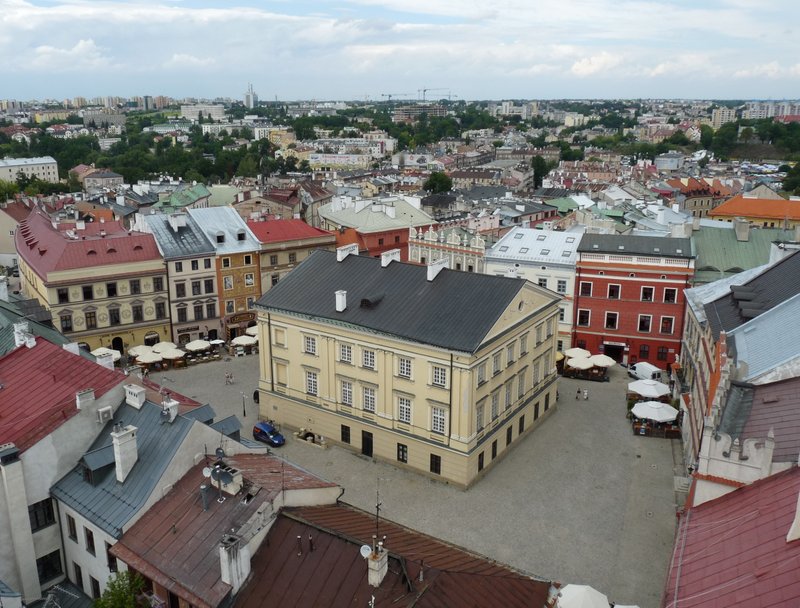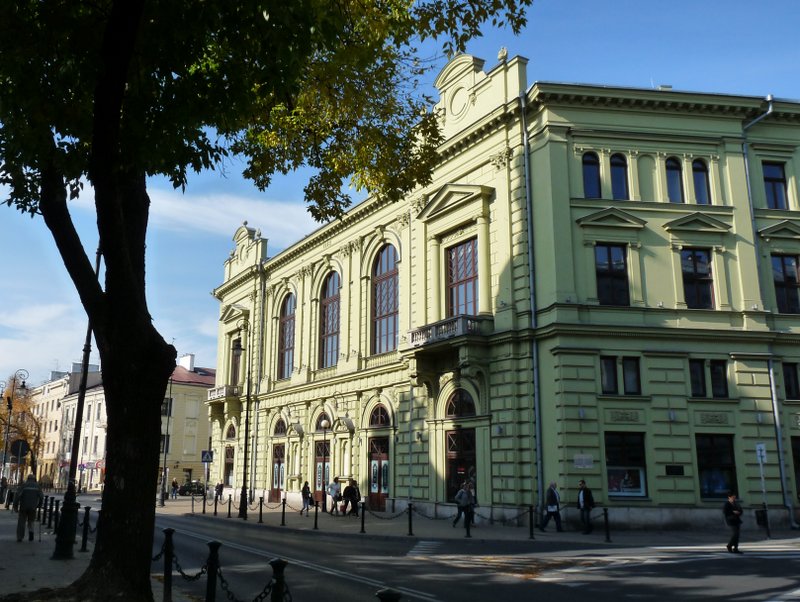Szlak Zabytków Architektury

In the mid XVII century, Mikołaj Daniłłowicz and his wife Zofia nèe Tęczyńska initiated the construction of the second convent for the Carmelite Sisters in Lublin and of the Church of the Immaculate Conception of Our Lady. However, a shortage of funds delayed the building process and it was not until the beginning of the XVIII century that the church was finished, owing to financial support from Elżbieta Sieniawska, and consecrated in 1721. ...

The Church of the Holy Spirit is one of the oldest churches in Lublin. It was built in the years 1419-1421 from the foundation of Lublin burghers. The church adjoined the then existing hospital for the poor, the disabled, and terminally ill. The building currently adjacent to the church from the western side, reconstructed in the XIX century, used to be a part of the hospital. ...

Before it was turned into a convent, the building in Świętoduska Street was a Renaissance fortified manor owned by the voivod Rafał Leszczyński, who intended to give it to the Lublin calvinist community. It was built in the years 1619-1622 by Jakub Balin and, after the calvinists left the city, it was bought by the Carmelite Sisters. The adaptation of the building lasted from 1630 to 1635. When the convent was completed, the construction of the temple began (1636-1640). ...

The church was built in the years 1412–1426 for the Birgittine Order as a votive offering of King Ladislaus Jagiello for the victory in the battle of Grunwald predicted by St. Birgitta. According to the tradition, the church was erected by knights of the Teutonic Order held captive after the battle. ...

The building of the current Town Hall was created as a result of the reconstruction of the former church and monastery complex belonging to the Discalced Carmelite friars, which was destroyed in a fire in 1803. After the fire, the friars moved to the former convent of the Discalced Carmelite nuns on Świętoduska Street. The destroyed buildings were bought by the City Hall with the intention of locating the new seat of the city authorities here. ...

The palace was built for Stanisław Lubomirski, the Grand Marshal of the Crown, at the turn of XVII and XVIII centuries in accordance with the design by the outstanding architect Tylman van Gameren. It was remodelled in between 1725 and 1728 under the supervision of the architect Franciszek Mayer by the order of Elżbieta Sieniawska née Lubomirska - the owner of the palace at that time. The palace was a dowry of her daughter, Zofia, and, through her marriage with August Czartoryski, it eventually became the property of the Czartoryski Family. Afterwards the building changed owners multiple ti ...

Centrally located Old Town Market Square in Lublin has irregular shape. Its location was conditioned by the buildings from before the town's location and the shape of the hill. It was officially outlined over 700 years ago, after Lublin had been granted a city charter (15th of August 1317). ...

A representative, ecclectic building of the Lublin theatre was erected between 1884 and 1886, according to the design by Karol Kozłowski. The building was funded thanks to the numerous public donations of and due to the initiative of the Lublin intelligentsia, industrialists, merchants, and local landowners. It’s one of the oldest theatre buildings in Poland. ...

The Old Theatre was the first permanent theatre in Lublin and one of the first ones in Poland. It was designed by Łukasz Rodakiewicz and erected in 1822. The building was embellished with a number of modest classicist details: arcades, masks and griffins. There were 334 seats in the auditorium. The Old Theatre had served its function until 1887, when the representational Municipal Theatre on what-is-now-known-as Narutowicza Street was opened. In the beginning of the XX century the building was converted into a cinema. Screenings were held there until the 1980s. Later the building gradually f ...

The Lublin Castle is one of the architectural and historical symbols of Lublin. It is believed that already in the VI century AD there was an early medieval settlement at the Castle Hill, as the natural values of the hill favored the establishment of a defensive, wooden structure. In the XII century it was a seat of a castellan, and in the XIII century a tower called donjon was built that we can admire to this day. The crucial date in the history of the castle was the year 1341, when the Tatars invaded Lublin. After this event, king Casimir the Great decided to built a brick castle in place of ...
Page 2 of 3












